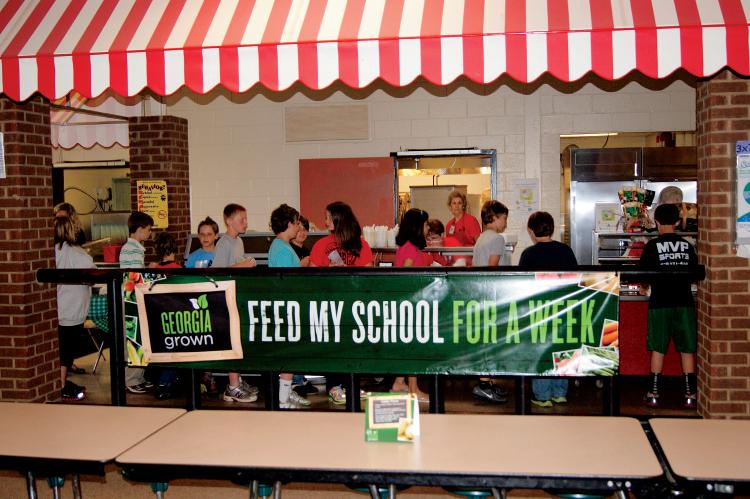Home > Georgia > Georgia Ag Education > Department of Ag Program Asks Local Communities to Feed Schools
Department of Ag Program Asks Local Communities to Feed Schools

When the Georgia Department of Agriculture staff asked schools to go local for one week, they knew it wouldn’t be easy. In fact, that’s why they did it.
Efforts have increased to support healthier school lunches that include local foods. The department created Feed My School for a Week in 2011 to make that a brief reality while also exposing the challenges of doing so throughout the year.
For some students, it was a week of visiting farms that grew the food they were eating and seeing a cow milked from the creamery that provided their milk that week.
“There was an excitement about school lunch that week,” says Jo Dinnan, principal at Wauka Mountain Multiple Intelligences Academy in Hall County. “More parents came in for school lunch to see what the kids were talking about when they got home.”
Her school was one of three chosen for the pilot program from different regions of the state. That week’s menu included local chicken, barbecued pork, strawberries, salad and even cornbread and grits from a local mill.
“We had more lunch participation that week than ever before,” Dinnan says. “Between cheesy nachos and chicken, they chose chicken.”
In Colquitt County, nutrition director Monika Griner says students were excited because they lived on those farms or knew of them. The school took it a step beyond and had the students grow basil and onions for a pizza garden.
“The kids got excited because they were part of the program,” she says.
The state hopes to add five schools to the program in the upcoming year and include a more diverse range of urban and rural schools, says Melanie Harris, nutritional coordinator for the Georgia Department of Agriculture.
The idea for the program came from Commissioner of Agriculture Gary Black, who wanted to encourage local farmers and schools to work together while also showing why putting local foods in schools is so difficult. For the week, foods had to be 75 to 100 percent Georgia grown.
The challenges became clear quickly. One example, Dinnan says, was the local creamery they could use that week did not have a bottle the correct size for regular school use. It’s also difficult to manage fresh produce storage when the growing season doesn’t match the school calendar.
The department wants to review each challenge and address it by policy, education or infrastructure, Harris says. Talking to green bean farmers about freezing extra produce instead of tilling it under, for example.
Communication proved to be the biggest factor. Putting farmers and distributors in the same room made for huge progress. Taking that to a wider audience is another of Harris’s goals. She would like an online system that allows people to give their location and learn what is grown in their area, who grows it and who distributes it. That could be significant for places such as hospitals, nursing homes and restaurants.
“Creating that database and network is much needed,” Harris says.



